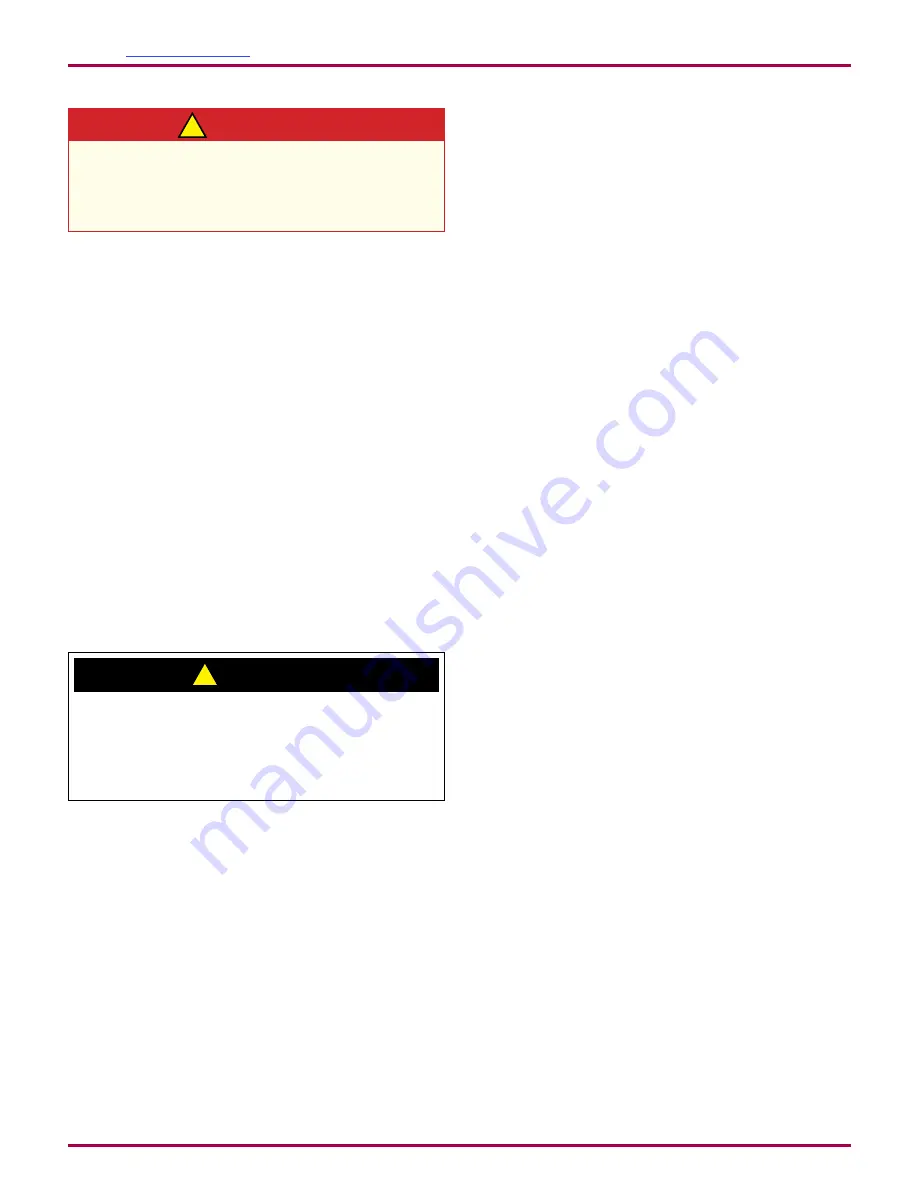
WA R N I N G
!
CAUTION
!
WATERBORNE ISOLATION
SYSTEM INSTALLATION
GUIDELINES
Using waterborne coating with electrostatic equipment
requires that the fluid source be isolated from ground.
Precautions should be taken to ensure operator safety
and system efficiency. The following guidelines should be
followed:
• The fluid lines and source MUST be isolated from ground.
An isolating Paint Stand or similar isolating (non-porous)
material MUST be used.
• Isolation stands MUST be at least 18-inches from ground-
ed booth walls, chain link fences, or other grounded
objects.
Never use wood products, wooden boxes, pallets,
or boards as an isolator. Wood contains moisture and
is a poor insulator. Electrical current passing through
these materials can ignite them, causing a hazardous
condition.
• Air hoses to the pressure pot or pump on the insulating
stand should be non-conductive plastic. Many rubber
hoses will have static grounding circuits or carbon content
and are NOT suitable for this application.
• All charged (isolated) systems MUST be inside a fence
or cage to prevent contact by personnel. An interlock
system MUST be provided that interrupts high voltage
flow to the applicator if the gate is opened.
WATERBORNE HOSE FITTING
INSTALLATION
For 79523 R90 Cascade - Waterborne: Ransburg supplies
the waterborne fluid hose factory pre-assembled to the
applicator unit. Standard hose lengths are 10m, 15m,
and 25m. To modify the hose length, use the following
procedures. All adjustments must be made at the supply
end of the system.
1. Remove the male connector and swivel fitting from the
end of the fluid hose by turning the nut of the male con-
nector counter-clockwise while holding its main body.
2. Remove the male connector nut from the fluid hose.
3. Determine the hose length that is needed and cut the
hose off squarely.
• Air regulators for pots or pumps should be mounted
remotely outside the fence or cage area to facilitate
changes in pressure without shutting the system down.
• Grounding hooks at the cage MUST be used to ground
the system when personnel are working close by.
• Fluid lines to the applicator MUST be protected from
scraping and abrasion on the floor or sharp metal edges
that could lead to voltage pin holing and loss of kV on
the charged system.
• Cleanliness and maintenance are extremely critical.
• Refer to "Installation - 79500 R90 Solventborne, 79501
R70 Solventborne Installation" in the "Installation" section
of this manual.
Typical installations to spray non-flammable
conductive materials (waterborne materials) must
not be used to handle flammable materials (solvent
based materials).
AH-06-01-R17 (08/2019)
66 / 79
www.carlisleft.com
PARTS IDENTIFICATION
EN














































